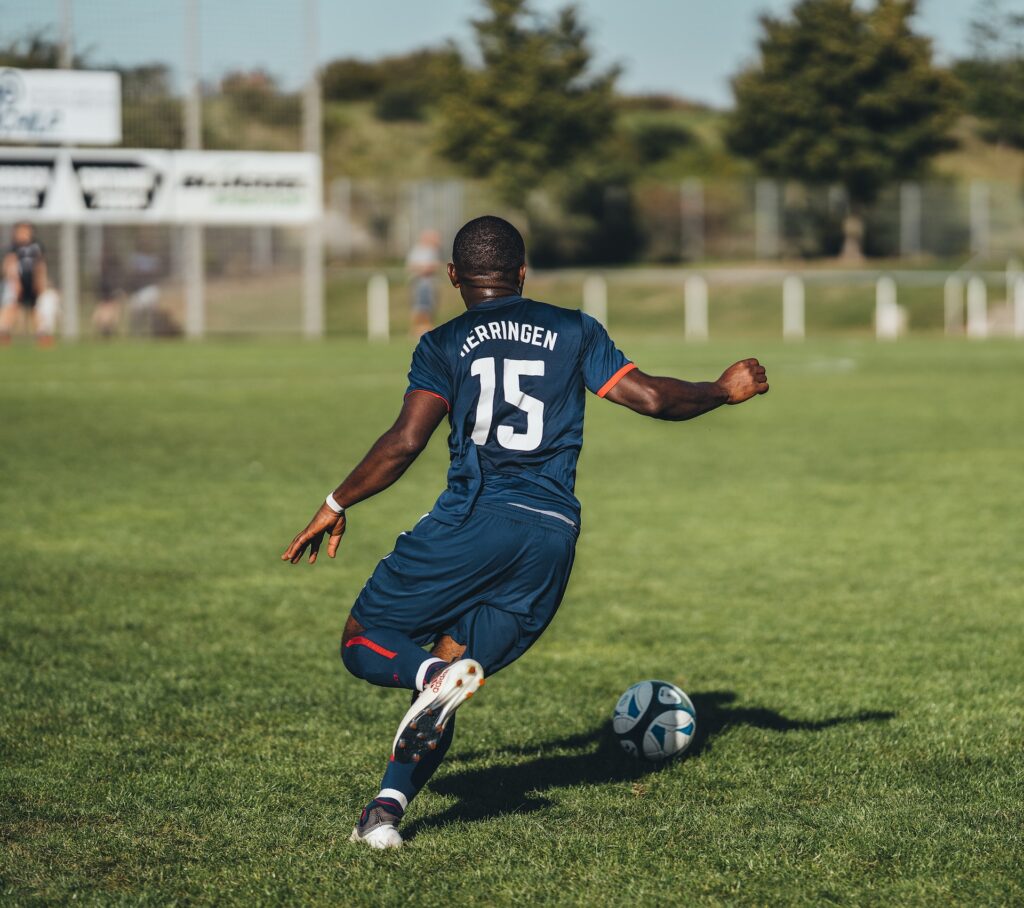Table of Contents
- Can you dribble in soccer?
- How to dribble a soccer ball?
- What are the different types of dribbling in soccer?
- How to protect the ball while dribbling in soccer?
- How to practice dribbling – Five Tips!
- Recap: Dribbling in soccer explained
Dribbling in soccer is a key component of the beautiful game.
After all, is there a more terrifying sight for a defender in soccer than a skillful player collecting the ball and running at them, fully intent on getting beyond them to the embarrassment of the defender?
Some of the planet’s highest-profile stars are great dribblers of the ball, offering a direct and alternate route to the goal instead of short passing moves.
So is dribbling worth it? How do we successfully exploit this skill?
Let’s take a look at what advantages dribbling can add to your game and when are the most opportune times to carry it out.
Can you dribble in soccer?
Yes, any player can dribble the ball in soccer.
Dribbling, where a player advances on a solo run with the ball, is a sought-after skill that coaches see as an inventive route into threatening territory.
No matter what your position on the field, you can dribble the ball forward. There are no strict rules to time of possession when dribbling, and can be performed in an area of the field.
Having said that, coaches might not want their center-backs or goalkeeper, for instance, driving forward from deep with the ball, potentially exposing a key defensive area of the field.
Usually, it’s the more attacking players who are tasked with dribbling because, when compared to a defender, it poses less risk to the team should they lose the ball.
Attacking players are often associated with possessing more intricate footwork, which is beneficial to dribbling.
How to dribble a soccer ball?
The key to dribbling on a soccer field is close control. The further the ball is away from your feet, the more likely it is that you’ll be dispossessed.
Maintaining control through focus is essential. Don’t lose sight of the ball, and keep an eye on the body shape of the defender so you can find the right moment to shift the ball.
No player will go through a season with a 100% success rate when dribbling because of the adventurous nature involved with carrying the ball up the field.
In the 2022/23 Premier League season, Newcastle United winger Allan Saint-Maximim has the most successful dribbles per 90 minutes of any player.
What makes players like Saint-Maximim so strong at dribbling is their unpredictability, their speed, and their superior footwork to out skill defenders.
What are the different types of dribbling in soccer?

The different types of dribbling you can perform can depend on many factors.
For instance, if you are a winger and the full-back assigned to neutralizing you knows they’re not as fast as you, they might drop a little deeper, conscious of the pace you possess should be granted more room behind them.
Therefore, faster wingers will look to exert their pace by pushing the ball beyond the defender and beating them in a foot race.
Players who are deemed slower than their faster rivals might need to find other ways of getting to the goal. These types of players benefit from tricks and flicks to deceive opponents. Ronaldinho is a prime example of an artist who could bamboozle defenders with his quick feet and creativity; pace was not the primary weapon in his arsenal.
How to protect the ball while dribbling in soccer?
It’s important to keep the ball within close control if you are dribbling. This reduces the likelihood that you will lose the ball and means you can advance further up the field.
Using your body is a useful and legal way to keep yourself between the defender and the ball. This is often referred to as shielding.
This is a tactic employed well by wingers who may lack pace but possess the fancy footwork to get away from their opponent with less room to operate in.
Manchester United winger Antony is far from slow, but his astounding footwork has earned him a reputation as one of the game’s best current dribblers and has become a thorn in the paw of defenders everywhere.
If the ball momentarily gets away from you, there’s no harm in halting your progress briefly by holding the ball up and keeping the defender out of reach. This allows your teammates to catch up with you and give the defenders something else to think about, potentially allowing you to restart your dribble.
How to practice dribbling – Five Tips!
If you’re hoping to make it as a winger or attacking player in soccer, here are five tips that will help you as you practice dribbling for the first time:
- Start slowly – if you’re a novice to dribbling, consider tapping the ball gently with your stronger foot while moving slowly on the practice field. There’s no need to sprint with the ball if you’re not fully adept at dribbling. This will build your capability and confidence to transfer this useful skill into a game.
- Drop the shoulder – when you’re running with the ball, you could try to deceive your opponent by feigning to shift one way around them when, in fact, you intend to go the opposite direction. Dropping the shoulder – also known as a shoulder feint – has been part of the game since at least the 1930s, when legendary English winger Stanley Matthews mastered the skill and revolutionized soccer.
- Switch between the inside and outside of your foot – clever defenders will be able to read your body shape and assess with a good degree of certainty which way you want to go. Dribbling with the inside of your foot dictates your body shape, as can using the outside of your foot, so alternating between the two when dribbling confuses defenders and keeps them guessing.
- Practice cone drills – practice makes perfect, as the old saying goes. Putting in the work on the training field through quick bursts and slaloming in and out of cones develops your balance and enhances your ability to move at speed.
- Try using stepovers – another way to cause mayhem for your defensive counterpart is to use stepovers, which is another ploy to throw the defender’s balance off so you can step the other way and gain some room.
Recap: Dribbling in soccer explained
Dribbling in soccer is the process of advancing with the ball on an individual run rather than passing between teammates.
It has been used for generations in the sport, and players continue to attempt to find new and creative ways of perfecting the skill.

